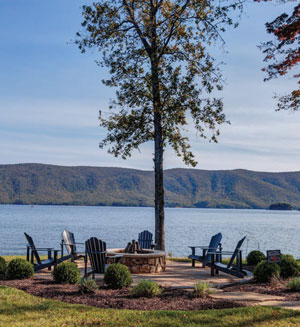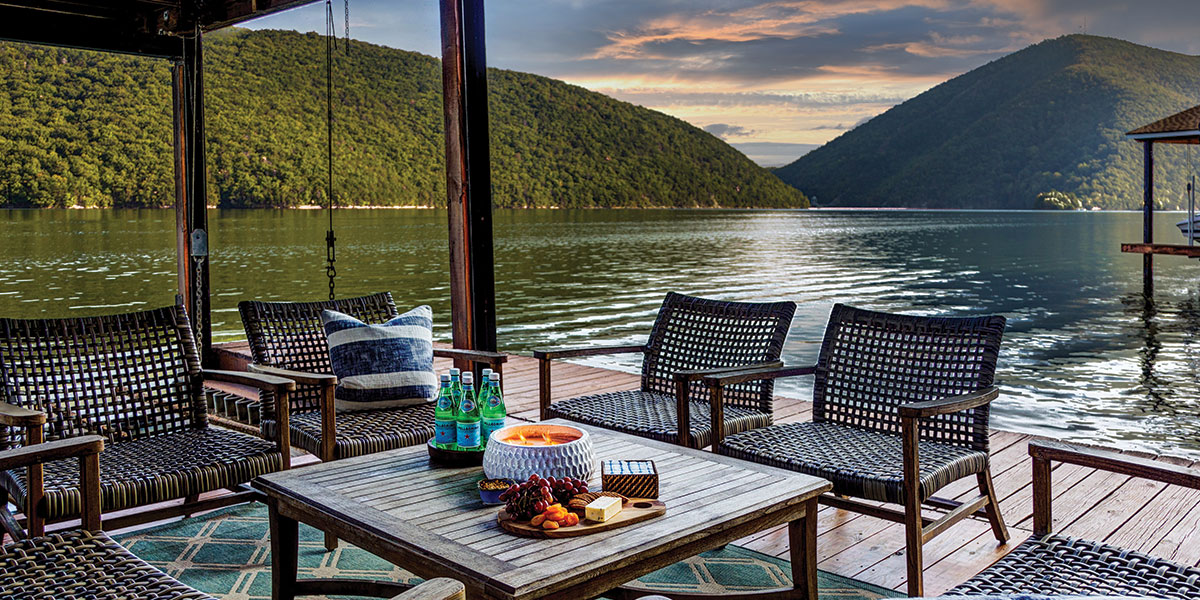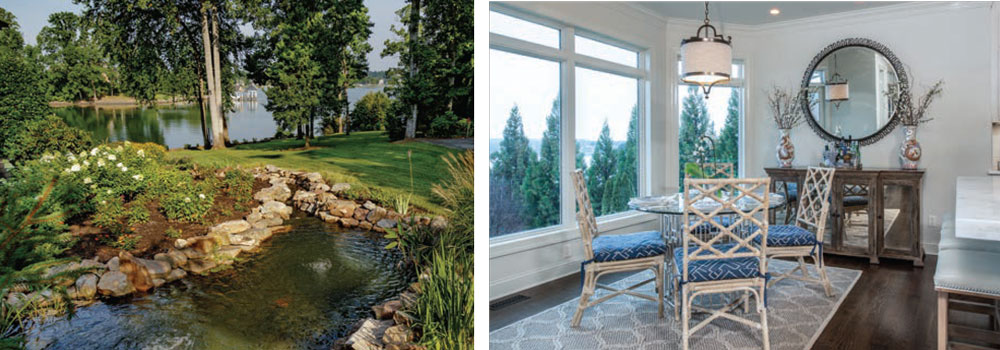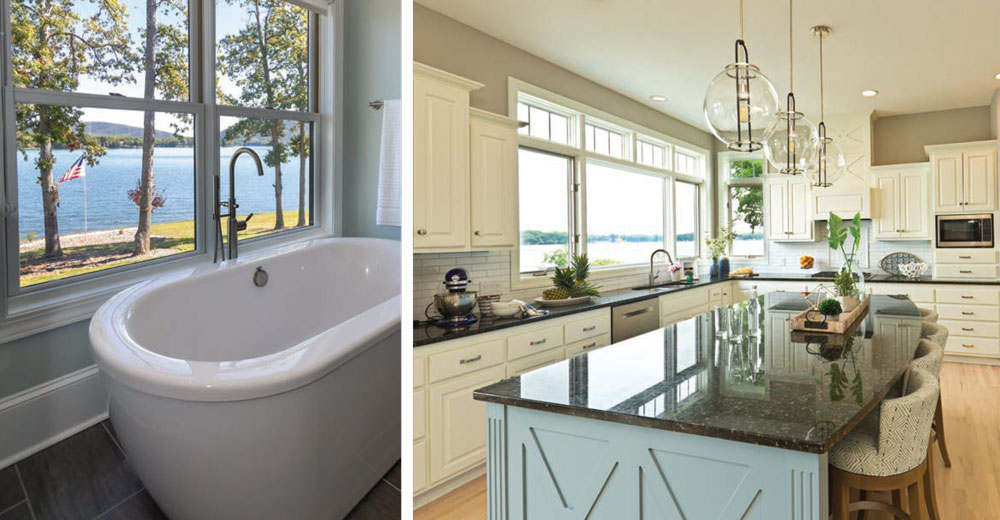There is the old real estate adage that the three most important things when buying or selling are location, location, location. The same is true for homeowners wanting to make the most of their views.
Whether you’re building a new home, constructing an addition or adding an outdoor feature, it’s a great idea to consider how it will look — from both inside looking out and vice versa. Alicia F. Smith, vice president at F&S Building Innovations in Roanoke, says homeowners often have a sense of the views when they commit to a property.
“A lot of people purchase lots because of the location, but it’s often the case they already know what they want the view to be,” she says. For properties at the lake, it’s obviously going to be the water, if possible. When building or renovating, if the budget allows, it’s a great idea to work with a design/build team or an architect. This allows for plans, and more importantly, any changes to get reworked on paper, which can save both time and money.
Make a plan
Smith says that homeowners usually know what they want. One family she worked with had a tree in the yard that obstructed some of their best views. Her recommendation, purely based on a professional assessment, was to take the tree down. But the homeowners had a sentimental attachment to the tree, which had been planted by a long-ago relative. Once they expressed that, F&S was able to create a focal point that included the tree. Smith was all in: “I think the key to creating the best views is what homeowners want to capitalize on. Homeowners know what they want in their hearts, minds and eyes.”
It’s also important to take into account how the sunlight comes into the space, and how it moves throughout the day. That might affect room placement, especially in renovations. While the trend now is for large, open spaces with lots of windows (especially in the back of the house), that was not always the case. Sometimes, it’s better to reimagine spaces – to orient the spaces to take advantage of the views. At the lake, for example, maybe the kitchen gets moved to the “front” of the house, and living spaces or a dining room get moved to the “back,” or a glass wall gets tucked into a corner.
Choose windows wisely
More and more often, says Mark Robertson with Capps Home Building Center, homeowners’ visions include larger expanses of glass to allow for more light and taking in the view – regardless of where the house is located. There are however, constraints, he said, including required wall structure.
“Another consideration regarding the window size and placement is whether the view opportunity changes if one is sitting versus standing in the room,” says Robertson, a window specialist. “Another important consideration affecting the view is the type of window — for example a double-hung window will have a horizontal check rail at mid-height that could obstruct the view, verses a casement or picture window, which would have full glass. Also, the placement of window grilles may affect the view.”
With trends moving toward expansive areas of glass, homeowners should think about security, privacy and even efficiency. Luckily, windows (like just about everything else) have become more efficient. First, a single-pane glass was upgraded to “insulated glass,” in which two pieces of glass were framed with air spaces between them. Now, the most common form of windows are created with Low E glass, says Roberston, which add to a home’s efficiency.
“Low E glass has a microscopic metallic coating that is applied to one or more surfaces of the glass,” he says. “This coating will reflect the sun’s rays back to the exterior, will reflect interior heat back into the room, and filter UV rays to help reduce fading of interior surfaces. Low E glass has an almost unnoticeable tint — but still reduces the heat transfer through the glass.”
Once limited to commercial applications, triple-paned windows are finding their way to some residential projects, as is “smart” glass, which can add a layer of security/privacy, says Robertson. “Whether it’s incorporated into the glass or is a film that is applied to the window surface,” he says, “with the flip of a switch, glass can go from clear to obscure in milliseconds. … As this technology continues to evolve, I expect window manufacturers will be more willing to incorporate it into their offerings.”
 Explore décor
Explore décor
For those who aren’t ready to tackle a remodel, there are some tried-and-true ways of maximizing a view. Decorators suggest opting for neutral, light shades of paint. Think about art galleries or museums with uniformly light color walls to not compete with what is on display. Same for window treatments: instead of voluminous, colorful fabrics, choose unobtrusive drapery or blinds.
Furniture layout, too, can help make the most of a view. Creating conversation areas around the view will draw your eye there; just make sure that traffic flow works. Think about low-profile pieces, too, so the view is not blocked. Using swivel chairs in front of or adjacent to windows allow for multiple options for taking advantage of the views. Be thoughtful about lighting and using mirrors to reflect light, too — remember to keep windows clean. Experts also say not to overlook landscaping: bushes, trees, flowers and even rock features can be used to make a space more attractive.
Finally, it’s important to note that not all properties/homes come with natural, take-your-breath-away views. But everyone, on any budget, can create beautiful spaces that are enjoyable to look at and spend time in.
“You don’t have to be on a mountaintop to have great views,” reminds Smith. “If you have a small deck, or any space really, you can create your own perfect, cozy view — it’s your view, your life. There are great options at every price point.” ✦



